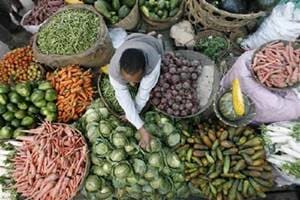It has never been so good for Indian consumers. The average retail inflation crashed from a high of 9.9% in FY13 to 4.9% in the current fiscal. Surprisingly, food inflation has been the unsung hero, with it getting more than halved over the same period—from 11.2% to 5.1%. The future trajectory beckons more hope, and we believe that for a major part of the current fiscal, inflation could well be below 5%, and with a little bit of luck, it may even go lower than 4%. Of course, as all economists want to put it in their words, it is contingent on no unfavourable events happening and so on.
Before we start our discussion, let us get some noises out of the way. Recently, rains and thunderstorms, accompanied by hailstorm in some places, flattened standing wheat, mustard and coriander crop in some parts of Punjab, Haryana, western Uttar Pradesh and Madhya Pradesh. Last year, three spells of similar unseasonal rains had flattened crops in 10 million hectares in at least 150 districts of the country.
This has once again led to speculation of a significant jump in inflation, but the situation is not as grim as it was last year, because the showers have been followed by bright sunshine. Barring central India, rainfall is deficient in all the regions (100-355% increase in FY15 across all regions, as against 80% more rainfall in FY16 and that too in central India). Hence, it is unlikely and possibly speculative to conjecture that the rains will lead to increase in inflation at this point of time.
Why we are so sanguine about the decline in inflation trajectory? Well, there are several reasons for the same.
First, the prices of pulses are on a declining trajectory. For the record, the weighted average contribution of pulses to headline CPI is around 96 basis points from September onwards. However, on a historical basis, this contribution is around 25 basis points. It means that there is a clear downside of at least 70 basis points to the headline CPI numbers over the medium term, as the prices of pulses start to revert to mean. In fact, this alone will pull down CPI to sub-4.5%.
Second, there is a general consensus in the market that the Union Budget FY17 has underprovided for Pay Commission and One Rank One Pension (OROP) recommendations. While this is correct to say that the entire R90,000 crore has not been provided for, the bottom line is that perhaps this is a conscious decision. As we understand, there is a committee that is still looking into the Pay Commission recommendations, and the final decision by the government will be taken only after that.
Third, the distribution of core CPI over the last 16 months indicates a nicely shaped ‘bell curve’, with mean CPI at 4.5%. Interestingly, if we look at the 95% confidence interval, all the CPI numbers are within that range, indicating that core CPI has nicely settled in a sub-5% range, with little or no negative surprises. This also substantiates that the Reserve Bank of India (RBI) has done a commendable job in de-linking inflationary expectations spilling over from food to becoming broad-based over the last one year.
Fourth, although it is more of a long term in nature, the Union Budget has taken several steps to increase agricultural productivity through better irrigation, insurance and other mechanisms. This could drive down food prices structurally over the long run.
In this context, we recently carried out a study to understand the dynamics of behaviour of intersectoral prices in case of India. Our results showed that agricultural prices and manufacturing prices are now being determined by separate forces—while the first is guided by minimum support prices, the second is primarily driven by changes in productivity and wage structure in the country.
For example, our research showed that labour productivity (estimated as the per capita manufacturing real GDP at constant prices) is showing upward trend, and sharp changes have taken place in labour productivity since the late 1990s. Data for manufacturing sector GDP at constant prices and the employment in manufacturing sector are taken from the Annual Survey of Industries (ASI), published by the Central Statistical Organisation. As a result of this productivity increase, manufacturing WPI had declined from a high of 12.3% in FY95 to as low as 2.4% in FY06. In fact, manufacturing prices consistently used to be lower around the year 2000 and average manufacturing was less than 4% in those years (just before the crisis).
To sum up, Terms of Trade (ToT) in India have stayed constant prior to the markets opening up. Ever since the globalisation took place, determinants of manufacturing prices and primary article prices have changed in the country. Prices of primary articles are mostly driven by minimum support prices, whereas manufacturing prices are driven by increasing manufacturing productivity (as historical trends suggest). Given this, it is important to consider productivity and minimum support prices in controlling inflation instead of focusing purely on the monetary front.
Authors: Soumya Kanti Ghosh is chief economic advisor, SBI; Rakesh Jangili is an associate with an investment bank. Views are personal
